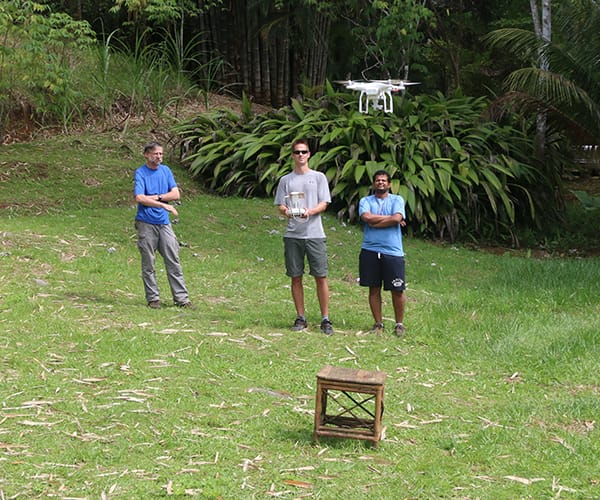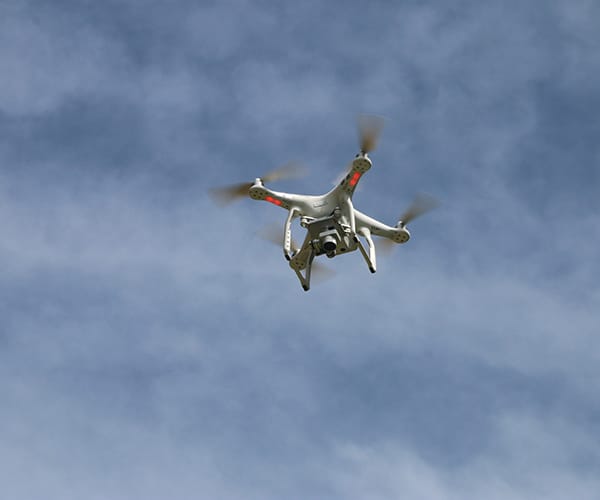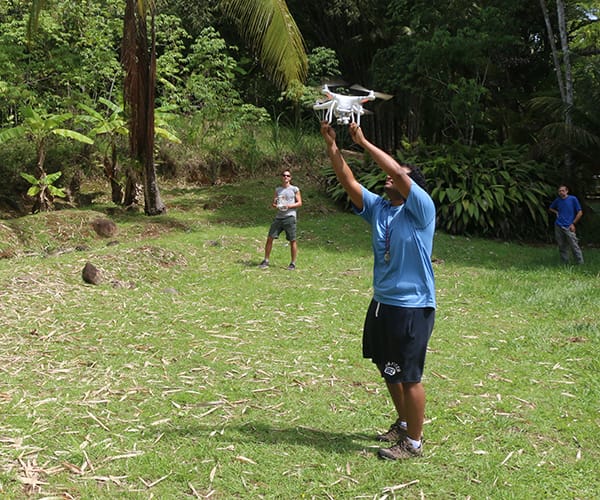Drones: Studying Reforestation in Costa Rica

Andrew Marx, an assistant professor at CGU’s Center for Information Systems and Technology (CISAT), and doctoral student Ahmed Alzahrani used drone technology as part of a collaborative research project in Costa Rica last month to begin measuring the progress of reforestation at a nature preserve.
Using an unmanned aerial vehicle (UAV)—commonly referred to as a “drone” —Marx and his research team gathered visual data across the electromagnetic spectrum (multispectral imagery) at a reserve managed by Pitzer College’s Firestone Center for Reforestation Ecology. The reserve is located on the southwest coast of Costa Rica, near the town of Dominical.

Professors Donald McFarlane and Warren Roberts, and four students from the W.M. Keck Science Department, an academic and research unit shared by Claremont McKenna, Pitzer, and Scripps colleges, were also involved in the project. Keith Christenson, a wildlife biologist working at the Firestone Center, served as the project facilitator for Marx and Alzahrani’s work and assisted students with their scientific study designs.
The visual data from the drone together with 30 years of historical satellite imagery will enable Marx and the other researchers to determine the rate at which the area transitioned from pasture back to jungle when it was purchased in 1993 as a reserve. The area was originally lowland rainforest that was cleared for cattle farming during the 1950s and 1960s. Since 1993, the reserve has been the subject of restoration and sustainable forestry efforts. It currently serves as a biological reserve and logistical base or ecological research and education.
Alzahrani said such fieldwork was valuable to his educational objectives.
“The fieldwork of Costa Rica was an extraordinary experience,” he said. “It gave me the chance to work on one of the important applications of drones and imagery technology, which is agriculture. Last spring, I took a class—IST 375, “Drones, UAVs, and Satellites”—with Professor Marx that widened my gaze in finding applicable problems that I can I apply the analysis techniques I learned from class to large-scale projects in order to publish the work. In fact, during our stay in the field we discussed a couple of the future projects that can be done in the reserve. As a graduate student, I’m glad that I had the chance to work with Professor Marx and learn from his experience in the academic and the technical sides.”
Marx said this research should continue over subsequent summers, creating ties between CISAT and Keck’s Environmental Analysis Program. This program is designed to prepare students for careers in fields involving environmental problem solving, such as policy, conservation, urban planning, climate change, and resource management.

“Such fieldwork gives our students the opportunity to conduct and publish original research and lead others in research design, collection, and analysis,” Marx said.
(Photo on homepage courtesy of Keith Christenson/Pitzer College)